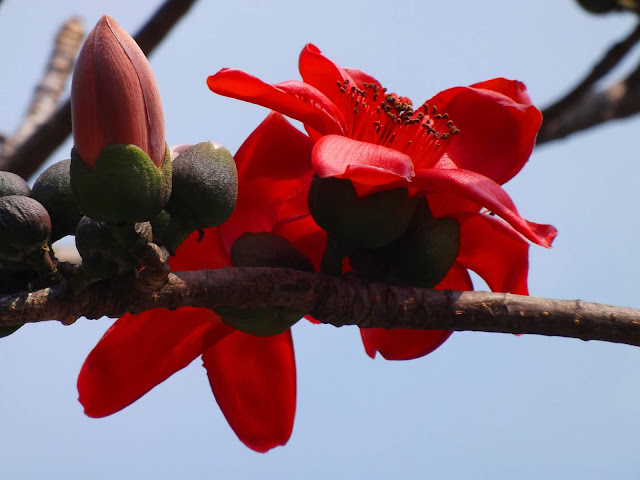Shotomuli or Shatawari, Asparagus racemosus
Shotomuli or Shatawari (Asparagus racemosus, family: Asparagaceae) Is a perennial creeping shrub with numerous branches. The spectacular bushy and extensive shrub is thorny. Sometimes thorne is about 1-3 cm long. It can extend far beyond by holding something. The plant has a large number of whitish tubers. For this reason in Bangla, it is called as Shotomuli (the plant of numerous roots).
Other names: Bohumula, Keshika, Shoto-netrika, Tejbolli, Modhura, Climbing asparagus (Eng).
It is a renowned herbal plant of Indian subcontinent. This is much appreciated in ancient Ayurveda. It is found mainly in the Sal forest of Modhupur and the Swamp forest of Ratargul, Sylhet in Bangladesh. It is also found in India and Sri Lanka.
Leaves are bright green, linear, those are called cladophyll. Cladophyll is leaf-like tiny branches. During the winter all its leaves fall off.
Raceme inflorescence bears many small and whitish flowers. Petals 5. Flowering occurs in autumn.
Fruits are pea-like, red, scented, 1-2-seeded. Propagation of the plant is caused by seeds and rhizomes.
It is a plant of various medicinal quality. Rhizome is used to reduce weakness and increase breast milk. It is also used in gonorrhea, strangury and for nocturnal emission. Stem is often used for decoration purposes.
The shape of leaves and branches are quite aesthetic. It is planted in medicinal corner of a botanical garden or park. It is also planted as an ornamental shrub in the personal garden too.






7984490669
ReplyDelete7984490669
ReplyDelete139B17F1D1
ReplyDeletebot takipçi satın al
bella modern swivel accent chair
48BA006C5B
ReplyDeleteWhatsapp Görüntülü Show Güvenilir
Canlı Cam Show
Telegram Görüntülü Show Grupları